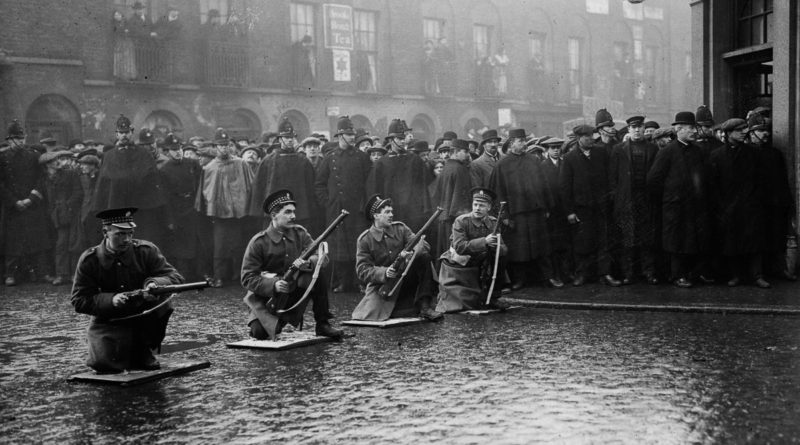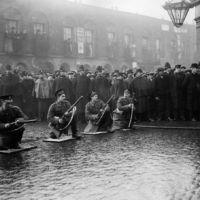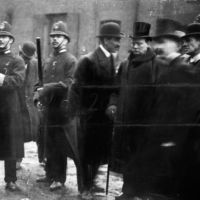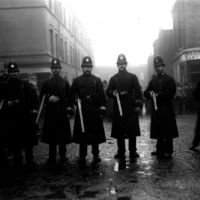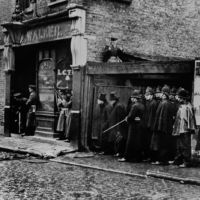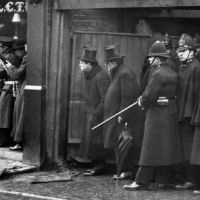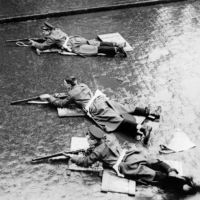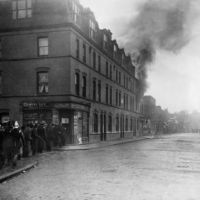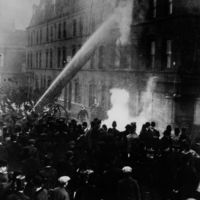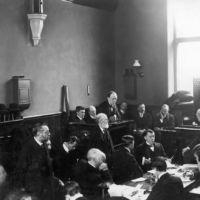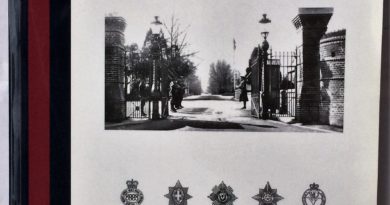The Scots Guards, Winston Churchill and the Siege of Sidney Street, 1911
On Dec. 16, 1910, a robbery attempt was reported at a jewellery store in the Stepney district of East London.
When police arrived, they found a gang of men armed with pistols, who opened fire on the unarmed officers. Three policemen were killed and two seriously wounded. As the burglars fled, one was wounded by friendly fire, and later died.
The gang, led by a man called “Peter the Painter,” were thought to be Latvian Anarchists hoping to use the stolen jewellery to fund their cause in Latvia.
On Jan. 2, an informant suggested that some of the gang members were hiding out in a house on Sidney Street.
Taking no chances, the police came with 200 heavily armed officers, overseen by none other than Home Secretary Winston Churchill. At dawn, a firefight began. With superior weaponry and a stockpile of ammunition, the gang was able to hold off the police for hours.
Marksmen from the Scots Guards were summoned, and Churchill (whose top hat received a bullet during battle) ordered the deployment of 13-pounder field artillery cannons.
Before the house could be shelled, a fire started. Churchill forbade the fire brigades from attempting to put out the blaze until the shooting stopped. Police waited, guns drawn, for the shooters to emerge, but they never did.
The bodies of Fritz Svaars and William Sokolow were found in the house, ending the Siege of Sidney Street, which was also called the Battle of Stepney in the sensational media accounts of the event.
“Peter the Painter,” if he ever existed, was never caught.
NOTE: This article was ‘sourced’ from the internet at the link below to create content for the sites opening. The link for the original article is below.
https://mashable.com/2016/02/01/siege-sidney-street/?europe=true


